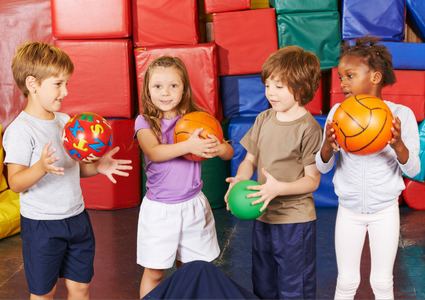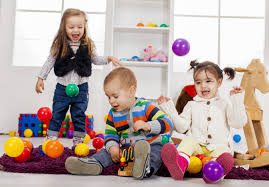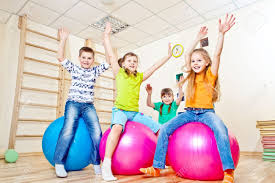
Using Balls to Teach Concepts – by Al Stewart
Ask the children “How many of you know what a ball is?” Their hands will go up and they will begin to share with you the different kinds of balls they know; how many of them have played soccer, baseball, t-ball, or basketball; how many of them have siblings that play some type of ball game; and how many of them have been to some kind of ballgame: baseball, soccer, basketball, football, etc.

Young children enjoy playing with balls. Building learning around children’s interests is an excellent strategy for teachers and/or parents. You may use balls to help children learn concepts and build skills in many different areas, such as language, math, science, motor development, and others. For this to be most enjoyable and productive, before your discussion about balls you might want to gather pictures of a number of different kinds of balls – baseball, soccer ball, football, basketball, tennis ball, softball, beach ball, koosh ball, nerfball, golf ball, super ball, volleyball, bowling ball, and many others. Since young children are concrete learners, it would be a good idea to have a basket of different kinds of actual, physical balls also.
First, ask the children how many different kind of balls they can name. Write the names on a sheet of chart paper (or whiteboard) as the children name them. If you would like to be brave, draw the balls and label them as they name them. You might want to allow the children to try to draw the balls. Have a large pocket chart nearby to display the pictures of the balls. This back-and-forth dialogue could go on for a few minutes. This would be an opportunity to introduce the children to balls that they may not be familiar with such as an exercise ball, a medicine ball, a whiffle ball, a rugby ball, a ping-pong ball, a billiard ball, a handball, and others. Encourage the children to ask their parents and siblings if they can think of other kinds of balls. This will help with the next level of this discussion.

The next day, you might want to begin the conversation by asking them if their family members thought of other balls. This could lead to the discussion answering the question “Do we play with all balls?” The answer is no. What other balls are there that we do not play with? Some answers are meatballs, cheeseballs, gum balls, crab balls, melon balls, and the like. Other balls would be disco balls and crystal balls. You will probably think of others. How many different balls can you think of? My list has 65 different kinds of balls on it.
What can we do with balls, specifically those that we play with? We can throw, catch, kick, roll, hit, toss, bounce, dribble, and carry balls. Ask for volunteers to demonstrate each of these action verbs. This would be a fun activity to do outside or in a large indoor space that would allow the children lots of room to play with balls. To increase critical thinking, we might ask such questions as “Are all balls round?” “Do all balls bounce?” “What is the largest ball you have seen?” “What is the smallest ball you have ever seen?” “Which ball is the heaviest?” “Which ball is the lightest?” “Which ball is easier to kick? Catch? Throw? Bounce? Dribble?” “What are balls made of?” “What does inflate mean?” “What balls need to be inflated?” “How many times can you bounce a basketball?”
As you can see, the use of balls can help young children to develop motor skills and eye-hand coordination, as well as language, math, science, and higher-order thinking skills. What children’s books, songs, or movement activities do you know that would be enhanced by the use of balls? Just a little something to think about.
